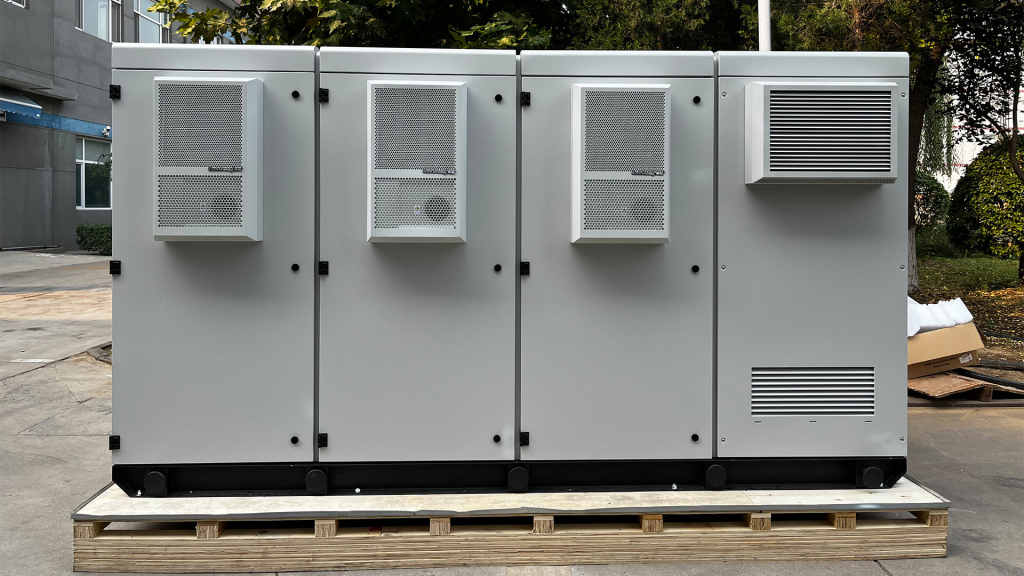Through statistics on various failures in the maintenance of UPS power supplies, it can be concluded that more than 50% of total failures are caused by battery-related issues. Meanwhile, the failure rate of online UPS power supplies is low due to their reasonable circuit design and large margin for driving power component capacity. However, the failure rate caused by battery packs increases to over 60%. It can be seen that correctly using and maintaining batteries is one of the key factors in extending the battery pack’s lifespan and reducing the overall failure rate of UPS power supplies.
Regular Inspections of UPS Power Supplies
- Regularly check the terminal voltage and internal resistance of each battery unit. For 12V battery units, if the voltage difference between each battery unit’s terminals exceeds 0.4V or their internal resistance exceeds80mΩ, the battery units should be balanced and charged to restore their internal resistance and eliminate the voltage imbalance between each battery unit. The charging voltage during balance charging can be set to 13.5-13.8V. After a good balance charge, the majority of batteries can have their internal resistance restored to below 30mΩ.
- During operation, the above-mentioned imbalance, which occurs due to the battery units’ characteristics changing over time, cannot be eliminated by the UPS power supply’s internal charging circuit. Hence, for battery packs with clear imbalances in their characteristics, if offline equalization cannot be carried out promptly, the imbalance will become more severe over time.
Re-float Charging
- If a UPS power supply has been shut down for more than 10 days, it should be restarted without a load to utilize the internal charging circuit to recharge the batteries for 10 to 12 hours before loading it again.
- Keeping a UPS power supply in a constant float charge state without any discharge process is equivalent to being in a “storage standby” state. If this state persists for too long, it can lead to battery failure due to “overstorage.” This is primarily manifested as an increase in internal resistance, which can reach several ohms in severe cases.
Reducing deep discharges in UPS power supplies:
- The lifespan of a battery is closely related to the depth of its discharge. The lighter the load on a UPS power supply, the greater the ratio of the available capacity of the battery to its rated capacity when the mains power is interrupted. In this situation, when the UPS power supply shuts down automatically due to low battery voltage, the depth of discharge is relatively deep.
- How can the deep discharge of the battery be reduced in practice? The solution is simple: when the UPS power supply is operating on battery power due to a mains power interruption, most UPS systems will emit a periodic alarm sound, lasting for about 4 seconds, to notify the user that it is currently powered by the battery. When the alarm sound becomes urgent, it indicates a deep discharge situation and immediate action should be taken to shut down the UPS power supply. If not necessary, it is generally not advisable to let the UPS power supply continue working until it shuts down automatically due to low battery voltage.

Ensuring the environmental temperature for UPS power supplies:
The usable capacity of a UPS power supply is closely related to the environmental temperature. Typically, battery performance parameters are calibrated under standard conditions at an ambient temperature of 20°C. When the temperature falls below 20°C, the available capacity of the battery will decrease, while temperatures above 20°C may slightly increase its available capacity. The extent to which batteries from different manufacturers and models are affected by temperature varies. Statistics show that at -20°C, the available capacity of a battery is only around 60% of its rated capacity. Therefore, the impact of temperature should not be ignored.
Additionally, to extend the lifespan of battery packs, it is essential to consider load characteristics (resistive, inductive, capacitive) and size when selecting them. Prolonged operation with excessively light loads should be avoided to prevent low discharge currents that could lead to battery disposal.
